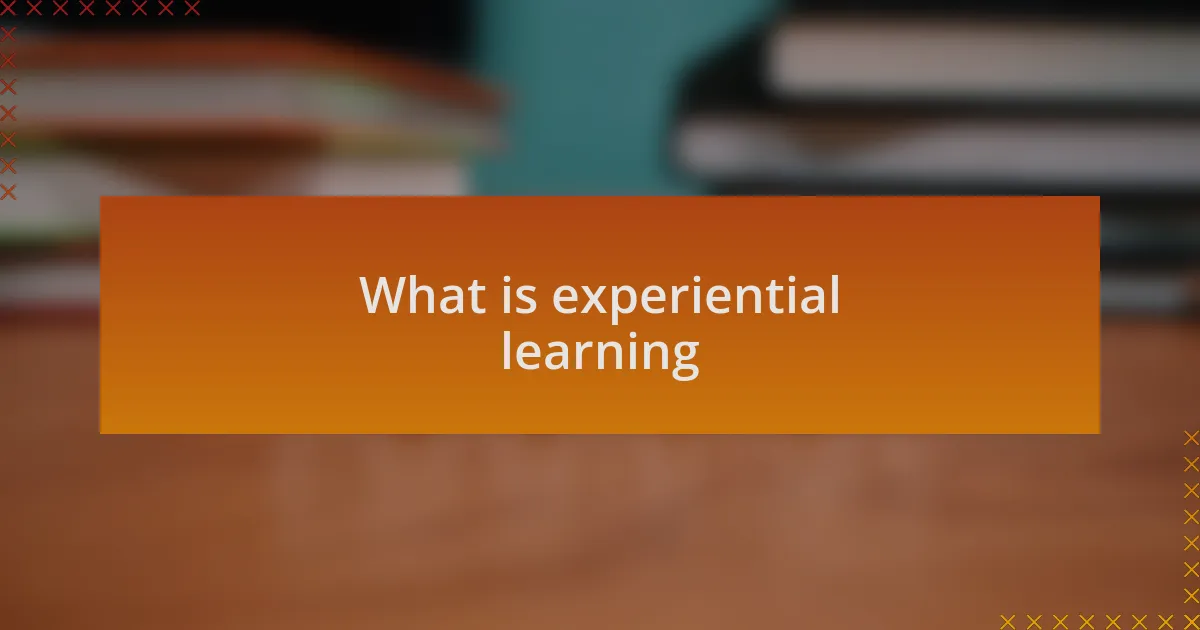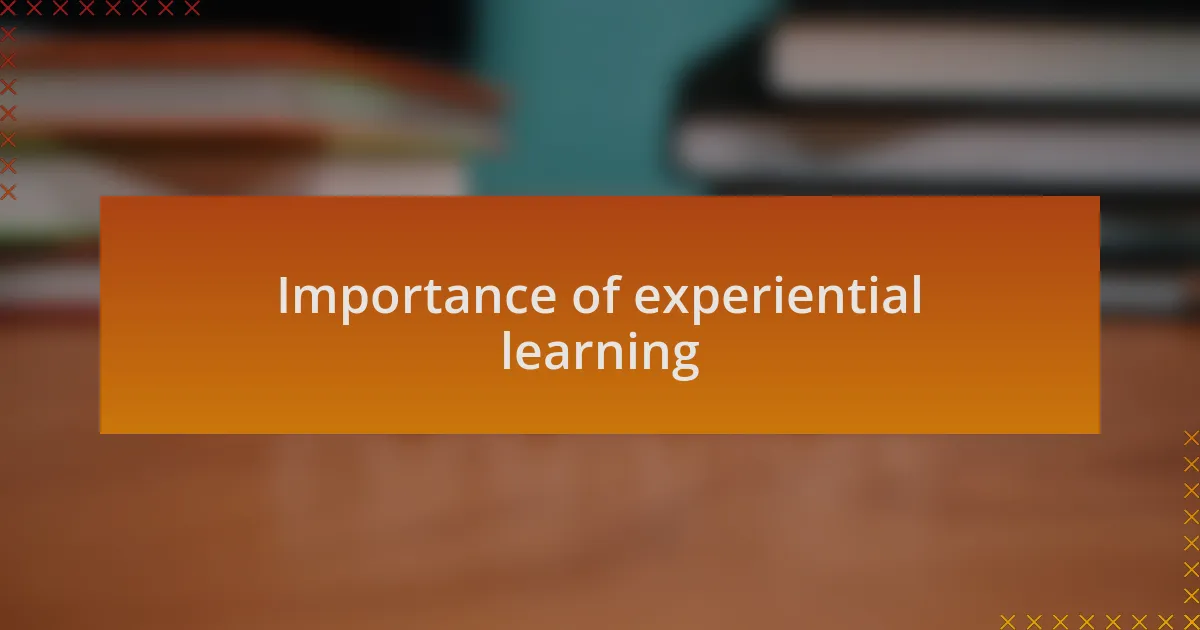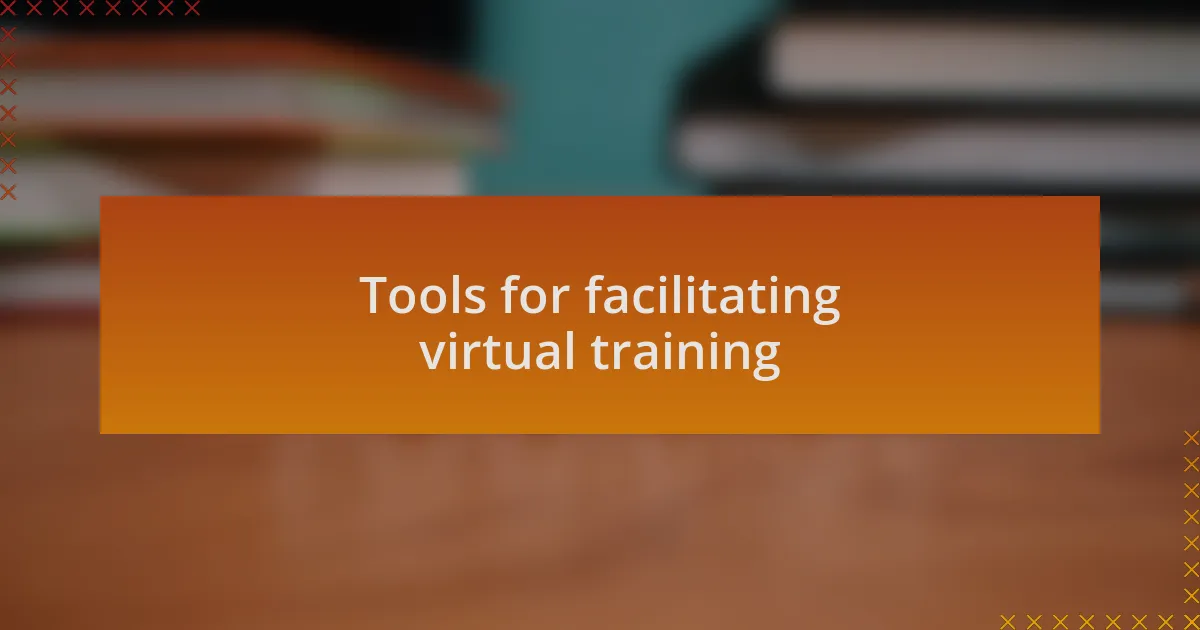Key takeaways:
- Experiential learning enhances retention and understanding through active participation, reflection, and real-world applications.
- Collaboration among participants fosters unique insights and problem-solving skills, especially in hands-on scenarios.
- Virtual training effectiveness is significantly influenced by the choice of interactive tools and flexible approaches to challenges.
- Creating a supportive environment and utilizing storytelling can deepen emotional connections and engagement among learners.

What is experiential learning
Experiential learning is a hands-on approach where individuals learn through direct experience rather than passive reception of information. I still remember my first experience with this type of learning during a workshop on team dynamics. Instead of simply reading theories, we tackled real-life scenarios and reflected on our responses. It made the lessons stick in a way traditional classroom learning simply could not.
At its core, experiential learning involves a cycle of action, reflection, and application. I once guided a group through a project where we discussed concepts, then dove straight into execution, followed by a debriefing session. It was fascinating to see how the reflections brought out insights that surfaced nowhere else, illustrating how vital reflection is in the learning process. Have you ever noticed how discussing experiences with peers often unveils perspectives you’d never considered?
This method not only fosters deeper understanding but also helps develop critical thinking and problem-solving skills. I recall a particularly challenging simulation exercise where we had to navigate unexpected obstacles. The adrenaline of the moment combined with the need to adapt our strategies was both exhilarating and educational, reinforcing the idea that true learning often comes from navigating challenges head-on.

Importance of experiential learning
Experiential learning opens the door to real-world applications of knowledge, making it incredibly relevant in today’s fast-paced environment. I remember facilitating a workshop on conflict resolution, where participants role-played difficult conversations. Watching them put theory into practice revealed their struggles and triumphs in a way that mere discussion never could. Have you ever tried something hands-on and felt the weight of the lessons learned?
The importance of experiential learning lies in its ability to engage multiple senses, deepening retention and understanding. During a field trip I organized to a local business, the participants were not just observers; they interacted, asked questions, and saw the theories from our classes come to life. I’ll never forget the expressions on their faces as they connected the dots—it was a powerful reminder that learning truly becomes personal when it feels real. How do you think your experiences shape your understanding?
Furthermore, this approach encourages collaboration, allowing individuals to learn from one another in unique ways. I once participated in a community service project where our team had to strategize under time constraints while not compromising our mission. The blend of working together, facing challenges, and celebrating small victories created a bond and deep insights that a lecture never could instill. Does this make you wonder how teamwork influences your own learning journey?

Tools for facilitating virtual training
When it comes to facilitating virtual training, selecting the right tools can make a significant difference in the overall experience. For instance, I often rely on platforms like Zoom for live sessions because they offer interactive features such as breakout rooms. These allow participants to engage in small group discussions, fostering connection and collaboration—elements that I believe are crucial for effective learning. How often do you find that smaller group settings lead to deeper conversations?
I also utilize collaborative tools like Miro or Trello to keep participants engaged. During a recent session on creative problem solving, we used Miro as a digital whiteboard for brainstorming. Watching participants excitedly contribute their ideas in real-time reminded me of the energy that flows in a physical classroom. Have you noticed how visual collaboration can spark creativity and innovation?
Additionally, I’ve discovered that a robust Learning Management System (LMS) is essential for organizing content and tracking progress. In my experience, platforms like Moodle allow me to create interactive modules and quizzes, which help ensure that participants stay engaged throughout the training. When learners actively participate and receive immediate feedback, it reinforces understanding and retention. Can you recall a time when timely feedback significantly impacted your learning?

Lessons learned from my experience
As I refined my virtual training program, I learned that flexibility is key. I vividly remember a session where a technical glitch disrupted the flow. Instead of floundering, I quickly pivoted to an alternative activity. This not only eased the tension but also turned into a moment of shared resilience, reinforcing how adaptable we can be in unexpected situations. Have you ever experienced a moment where flexibility led to a surprising outcome?
Another lesson that stood out to me is the importance of nurturing a supportive environment. I once conducted a feedback round halfway through a course, asking participants how they felt about the training. The concerns and suggestions shared were invaluable. It hit me that fostering an atmosphere where learners feel safe to voice their thoughts can catalyze immediate improvements and elevate everyone’s experience. What changes have you made based on participant feedback in your own programs?
Lastly, I’ve come to appreciate the power of storytelling in engaging virtual learners. During a training on leadership, I shared a personal anecdote about a challenging project I managed. The response was profound. Participants connected with the experience, and the ensuing discussion felt rich and vivid. This taught me that stories not only convey information but also forge emotional connections. Have you ever noticed how a story can transform a mundane lesson into something memorable?